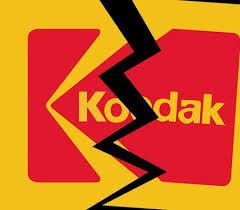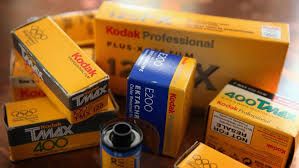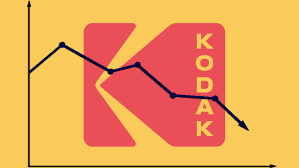"Intelligence is the ability to adapt to changes." Stephen Hawking

Sudden changes do not arrive without warning. Do not take seriously the potential of new technologies when you have the opportunity to integrate it into the organization, it can be more painful when competitors begin to use them and lose competitive strength.
Kodak is a well -known example of business failure, due to the rejection of digitalization, innovation and modernization of its products and services for its customers.
The implementation of the digital transformation allows to better know the trend of the market, customers and increase business resilience to be prepared for changes, it is a matter of mentality of managers and employees of the entire company and technological infrastructure.
Innovative vision
The main problem of its decline was that it did not strive to innovate in the field of digital photography, complying with being the leader of the film rolls and the consumables and in the idea of focusing only on a product, putting all the resources in the production of cameras that really went to a lost and broken background. This is simply due to a natural fear of losing buyers of a lifetime and entering unknown markets. Unlike Canon, Sony or Fujifilm, the Japanese brand and its main competitor, which had always been more innovative, with a more prone to risk and adventurers and that did not have so much to lose. These took advantage of the technological advances and explored the vast possibilities that the digital camera that Kodak had rejected.

The leading company for sale of cameras and photographic implements for almost 130 years (1888-2014), with a domain of more than 85% in photos and movies, instead of growing to the rhythm of the market and risking proposing new ideas, stagnated in the product he already had and that generated profits, thinking that the position they had already obtained and the confidence they generated in their customers could not be replaced by nothing A decline in sales of such magnitude that led him to ruin.
With the arrival of the 21st century, when the world was already digital and users no longer revealed their photos as before, then Kodak realized that he should enter the digital market, but it was too late to do so and in 2012, Kodak declared himself in bankruptcy.
Kodak had the gold mine in his hands and ruled it out
Ironically Kodak developed the first digital camera in 1975, Steve Sasson one of its engineers, developed a digital camera prototype that could take photos, store it in memory and transmit it on television which stored the images in a digital cassette with a quality of 0.01 megapixels. The product was ruled out for fear that the photographic film business would threaten, as it was convenient to continue selling rolls and consumables, and that is, the business that contributed benefits to Kodak was not so much about the sale of cameras, but of the revealed photographs and films.
Executives did not want to do innovations and changes in the new century, they could not understand a world without the traditional photographic film, there were few incentives to deviate from the original course, which expected Kodak to stop the change towards digital through aggressive marketing.
What were your true mistakes?
· Do not risk , play everything to a letter and continue betting solely on traditional photo cameras, losing the opportunity to be the pioneers in launching a camera that would revolutionize the market, in a world that was directed without brakes towards the use of digital cameras in mobile phones.
· Disient their competitors , considering that they would never have the same success and results as them. So, while their competitors struggled to innovate to attract more customers, they trusted their power and sold their traditional products, without making any change.
After the last years with failed attempts to adapt to the new digital era, in January 2012, analysts suggested that the company could go bankrupt. This was confirmed on January 19, 2012, when the company submitted its official bankruptcy application and declared bankruptcy for a debt that reached almost 6 million dollars.
Wanting to resurface from their ashes
Trying to see again the light and glory of years ago, Kodak announced in 2015 his return and not precisely to the cameras but of the development of a new smartphone in collaboration with Bullit Group, a company dedicated to design.
In 2017 he launched the Kodak Ektra with Camera-First, he had great success and now he will start selling in the United States. New functions and adjustments have also been added in the operation with a software update, which includes RAW support, better functioning of the auto-focus and improvements in the white automatic balance and in color saturation.

In 2018 he entered with force seeking to resume the dominant position he had one day, launching the super 8 camera having a price between $ 2500 and 3000. This camera had 3.5 -inch LCD screen, interchangeable batteries, USB, microphone that recorded the audio on an SD card, and variable speed control.
If you stagnate, you lose everything
Kodak may be visionary, but it was not fast and also settle for what they had. This caused Kodak's studies to end up disappearing. However, the decline of the company came long before, because even when you are a large company, nothing guarantees that you will last forever and especially if you do not meet the fundamental, which is to go in line with the needs of the clients and meet them correctly.
Kodak serves as an example to explain what happens when as a company you are given in income and think only of the business, instead of providing value to your customers, because if you have an idea that improves the life of your customers, and do not get it to the market for the fear of losing your income, someone else will work on that idea and take advantage of its full potential.




